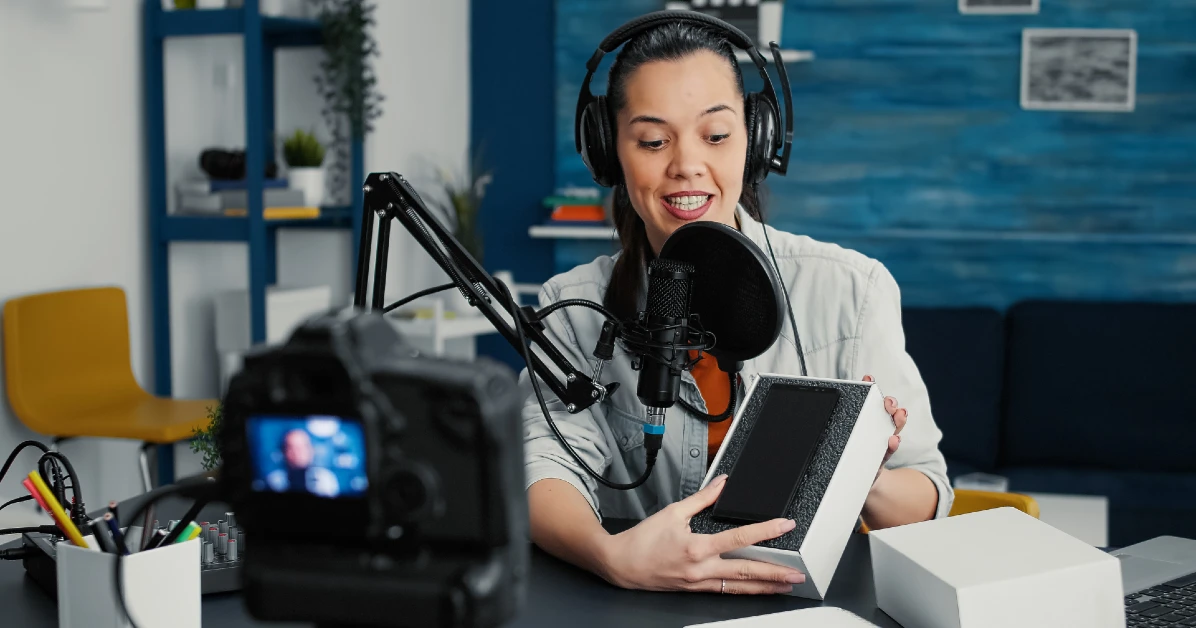The social media landscape is constantly changing. The ongoing evolution of social platforms as mediums for both connectivity and outreach is happening at an ever-increasing rate — if you were a social media expert a year ago but stopped paying attention, much of what you knew to be true would now be largely obsolete.
While staying up to date is always a key requirement in any business, it’s arguably more-so in the social sphere, and with so many people keen to utilise social platforms for personal or business benefit, it’s important to know what you should be looking at and what skills you should be developing to maximise the potential of this growing element.
So with that in mind, what are the social media skills you should be working on, right now, to ensure you’re staying relevant and up to date in the social space? Here are some the key feature/s of the major platforms that you should be up skilling on in order to stay ahead of the game.
Learn how to use Facebook data and insights to your advantage
It’s tempting to point to video as the key area of focus for Facebook, given the platform’s major emphasis on video content over the last year or so. The introduction of autoplay video has lead to Zuckerberg’s social giant serving over four billion video views per day on the platform — Facebook now rivals YouTube for online video domination, a battle they’re pushing to win (online video is growing faster than any other digital category, and is projected to grow 29%, year-on-year, till 2017, presenting a major revenue opportunity).
But despite the clear growth and emphasis on video content, Facebook’s true strength lies in its data.
Amidst all the challenges Facebook is putting to brands and marketers — reducing organic reach, pushing people towards paid advertising – the one constant, winning strategy on the platform is providing content that resonates with your audience. You do that, and people will ‘Like’ and comment and your posts will gain better reach as a result.
As Facebook squeezes Pages to make them provide more interesting content, the way you can beat them is by doing just that. But, of course, you have to know what your audience wants in order to provide it.
There has never been a better catalogue of consumer data and insight than Facebook. Facebook has more personal data and information than any other company in the world, data they use to hone their products and target their ads — data that makes it, arguably, the greatest advertising platform ever created. Because they can correlate interests and signals from their 1.44 billion members and come up with definitive, intelligent matching that will ensure your ads reach the most responsive, interested audience subsets. Researchers have found that they can create incredibly accurate psychological profiles of people based solely on the things they’ve liked on Facebook — more accurate than family members, even partners.
Given that, the potential in finding the correlating interests and behaviours among your target audience are almost endless. Imagine if you knew that 80% of your audience liked Bali, photography, and romance? Creating content structured around those specific themes is likely to resonate pretty strong in that community — and that’s a very basic, simple example of what’s possible.
How do you do it?
In March 2013, Facebook introduced a new search functionality called Graph Search. Graph Search took Facebook searches beyond their basic capacity, enabling users to find more focussed and refined information from within their extended networks. Via Graph Search, you can enter something like ‘Favourite movies of my friends’ and Facebook will give you a detailed listing of the most liked films from your network and extended network of connections. Graph Search isn’t perfect, and Facebook makes the data more difficult to use in order to push you towards utilising their ad targeting options, as opposed to presenting all the information, straight up, but it’s still powerful, and still very useful in understanding what data you can get from Facebook, and gathering valuable insights to use in your marketing.
First, you need to have access to Graph Search. All US users have access to Graph Search, those outside the US, not so much. But you can still get it. In your Facebook account settings, go to ‘General’, edit the ‘Language’ and change it to ‘English (US)’ (Australia defaults to ‘English (UK)’). That’s it — once you’ve changed the language, Facebook Graph Search will be enabled — go to your Facebook search bar and start typing in extended queries — things like ‘which of my friends use dating apps?’
For marketing purposes, you can write in a query like ‘Favourite interests of people who like [your brand]’. Graph Search will give you a listing of all the things people who’ve liked your brand also like.
You have to be careful, as Graph Search listings are not in the order you’d expect — the interest listed first is not necessarily the most common interest among your fans — but you can use this as a guide to what your community is interested in, and you can create more complex searches based on this to narrow down the results and find the most common interests. It takes some time, but conducting searches via Graph Search is a great way to learn more about Facebook’s data trove, and how you can use it to your advantage.
Learn how to use visuals in your tweets on Twitter
Twitter has been on a tear recently, ramping up new options as they push to expedite the growth and monetisation of the platform to appease investors.
They recently formed a new partnership with Google which will see more tweets indexed in Google search, a move that’s likely to increase the value of Twitter as a medium — if branded tweets start showing up high in Google search, that presents a whole new opportunity for companies to reach potential customers. Twitter also announced Project Lighting, which is essentially a new way of presenting tweets – content will be categorised into events, with human editors ensuring the most relevant content is being fed through, helping reduce the noise and maintain Twitter’s place as the network for real-time news.
But amidst all of this, Twitter has also become a lot more visual. Following Facebook’s lead, Twitter has introduced autoplay video into their feed. Autoplay has generated a heap of engagement on Facebook, with people pausing to take a look, rather than scrolling on by. Twitter’s hoping they’ll be able to replicate Facebook’s success in this regard, but the introduction of autoplay is only the latest step in the expanded ‘visualisation’ of the micro-blog giant. Images now play a big role in the wider Twitter experience. Evidence of the value of including images within your tweets has been reinforced by various reports — I recently conducted my own research on the tweets of a major brand and found their tweets that included images generated 66% more URL clicks than those without.
Images, as all the data will tell you, are powerful, and where you can, you should be utilising visual elements in your tweets to boost engagement. Add to this Twitter’s recent addition of native, in-stream video, and the growth of live-streaming — distributed through Twitter via Meerkat and Periscope (which is Twitter-owned) — and it underlines that the key skill to master on Twitter, right now, is the incorporation of visual content into your tweet process.
How do you do it?
Adding images to your tweets is easy to do, it just takes a moment longer in the composition phase — but as noted above, that extra effort is worth it.
When you’re sharing out a blog post or link, make sure you copy the main image and use that in your tweet. Add in your own images where you can, consider what you can do to make your tweet stand out in the stream. Native video, too, is quite easy — in your tweet compose panel in your mobile app, when you click on the camera option to take a photo, you have the option to switch to video mode instead. You can film up to 30 seconds of content by holding your finger down on the camera icon.
Live-streaming is a little more difficult — I’ve tried a few times and don’t really find it a comfortable process, as it’s just you talking to your phone. But some people are very good at it and are achieving excellent results. At the least, you should familiarise yourself with how live-streaming works, the apps themselves and how the streams are distributed. Understanding the process — more than just the existence of the functionality itself — is an important step for anyone trying to keep a handle on the social sphere, as there are quirks and search processes for each that will help you best utilise the option. And who knows, maybe that research will awaken the broadcaster in you, or an idea for your brand, and you’ll take to it from there.
Utilise rich content in your profile on LinkedIn
The professional value of LinkedIn cannot be over-stated. There are huge opportunities to connect with professionals and professional networks, enabling you to showcase your knowledge, skills, and experience – even if you’re not looking for a job, you should be active on LinkedIn, or at the least, aware of what’s happening on the platform.
One of the most under-utilised options on LinkedIn is the ability to add rich content to your profile. Rich content is essentially samples of your work and what you do, either through links to content or websites, or through uploaded files, like PDFs, videos, or presentations. SlideShare content, for example, is a great one to utilise in this context — LinkedIn owns SlideShare, so their support for SlideShare content is pretty solid.
Adding in relevant links and content adds a whole new element to your LinkedIn profile. Everyone’s got the basics down and has filled out their descriptions to best represent their skills and experience, but this is an opportunity to show your work, to showcase what you do, and have done. LinkedIn supports a range of content, and when you add to this the ability to blog on LinkedIn’s Publisher Platform — you can upload or create blog posts direct on LinkedIn and they will be forever associated with your profile — there really is a heap of opportunity in rich content on LinkedIn.
Failing to utilise it is missing a trick, and could prove the differentiating factor in maximising your opportunities on the platform (while it’s not explicitly stated, I have no doubt that LinkedIn Publishing Platform posts count towards your LinkedIn SEO, how likely it is you’ll show up when people search for terms related to your location and skills on the platform).
How do you do it?
The social media landscape is constantly changing. The ongoing evolution of social platforms as mediums for both connectivity and outreach is happening at an ever-increasing rate You can add media samples to the Summary, Education and Experience sections on your profile. To add new content, click on the box marked ‘+’ at the top right of any of these sections and paste in a relevant link, or click through to locate the content on your PC.
LinkedIn’s Publisher Platform is accessible from the home screen of your LinkedIn profile — there are three options at the top of your feed, ‘Share an Update’, ‘Upload a Photo’ or ‘Publish a Post’. Creating a post on LinkedIn is the same as any other blogging platform – you write in your content, add in a relevant image (that you’re able to add, in regard to copyright) then hit ‘Publish’. Your connections will be notified that you’ve published a new post and there’s a chance that LinkedIn’s editors could be alerted to it and share it out even further — and with 364 million members (5 million+ in Australia alone), the potential reach for your content is huge, if it resonates with the LinkedIn audience.
These are just three of the many social platforms available and just a couple of examples of the opportunities contained within each to those who take the time to learn their way around and work out how to connect with their audiences. There’s also massive opportunities in the rapidly expanding Instagram network, in the Millennial playground that is Snapchat, and in the online shopping Mecca of Pinterest.
Each network has its own personality, its own unique processes and strategies, and each is developing in its own way. Knowing which is best for you, and/or your brand, comes down to research, and keeping in touch with the ongoing changes and shifts will ensure you stay up to speed and are able to maximise your opportunities in the evolving social landscape.
ABOUT ANDREW
Andrew Hutchinson is a social media consultant and freelance writer from Melbourne, Australia. He has more than 11 years experience working in media monitoring, helping clients locate, evaluate and action keyword mentions in all forms of traditional and digital media. He's an internationally published author, an award winning blogger and one of the ‘Best Thinkers' on leading social media news website Social Media Today.
Latest.

How To Give Your Creative Career More Stability In Times Of Change
Industry Trends, Job Seeker

The Key to Being Job-Ready is Being Resume-Ready
Job Seeker

Are Companies Taking Advantage Of Job Seekers In A Competitive Market?
Job Seeker, Industry Trends, Hiring Insights




